I need a function that decimates, removes m in n of, a numpy array. For example to remove 1 in 2 or remove 2 in 3. So an array which is:
[7, 4, 3, 5, 9, 2, 4, 1, 6, 8]
decimated by 1:2 would become:
[7, 3, 9, 4, 6]
I wonder if it is possible to reshape the array from 1d array N long to one that is 2d and N/2, 2 long then drop the extra dimension?
Ideally, rather than just dump the decimated samples, I would like to find the maximum value across each set (in this example pair) of values. For example:
[7, 5, 9, 4, 8]
Is there a way to find the maximum value across each set rather than just to drop it?
The added challenge is that the point here is to plot the values.
The decimation is required because plotting every value is taking too long meaning that I have to reduce the size of an array before plotting it but I need to do this quickly. So for or while loops would take too long.
